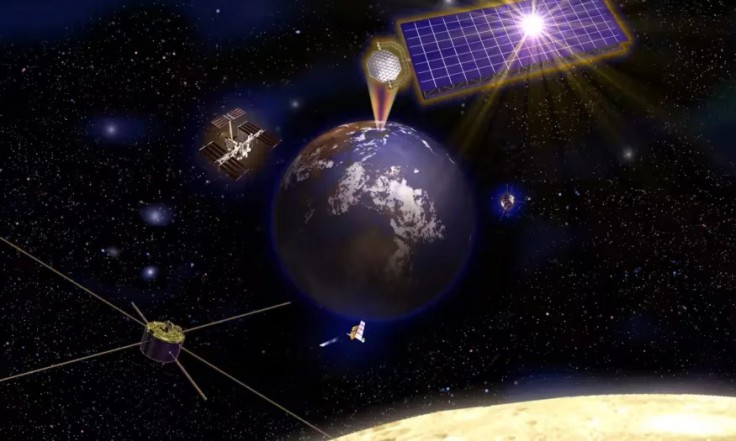The power of the sun might soon be available at a power station near you.
Japan's space agency, in collaboration with Kyoto University, will test a method that would allow humanity to beam solar energy down to Earth for use regardless of the weather.
While the use of technology to send power from space to Earth was proposed before, it is only now that countries have been taking the idea seriously, thanks to many technological advancements.
JAXA, Kyoto University Space-based Solar Power

Japan Aerospace Administration Agency (JAXA) and Kyoto University recently mentioned they would soon test a technology that would have satellites beam solar energy from space back to Earth via ground-based receiving stations hundreds of miles away to provide electricity to places regardless of weather, per Nikkei.
Kyoto University professor Naoki Shinohara led a group that continued research first time in the university in the 1980s. During that time, former Kyoto University President Hiroshi Matsumoto was studying the idea P. Galser proposed in 1968 - Solar Power Satellites (SPS).
According to Kyoto University's webpage on the matter, the SPS is a gigantic power station with solar cells in geostationary orbit capable of generating five to ten gigawatts of power. They would then use microwaves to beam down the power from space to Earth at a frequency of 2.45 GHz.
With technological advancements, Japan managed to succeed in beaming power from space to Earth in 1983, with a rocket experiment called Microwave Ionosphere Nonlinear Interaction Experiment, the first microwave energy transmission experiment in the world's ionosphere.
With technological advancements, Japan managed to succeed in beaming power from space to Earth in 1983, with a rocket experiment called Microwave Ionosphere Nonlinear Interaction Experiment, the first microwave energy transmission experiment in the world's ionosphere.
Further advancements allowed Japan to achieve success again in 2015 when JAXA scientists successfully beamed 1.8 kilowatts of power more than 50 meters to a wireless receiver. Now, JAXA and Shinohara plan to utilize small orbital solar panels and microwaves to send energy to Earth, where ground-based receiving stations would collect the beamed-down power delivered via microwaves hundreds of miles away, per Engadget.
"If we can demonstrate our technology ahead of the rest of the world, it will also be a bargaining tool for space development with other countries," Shinohara said.
The group plans to test out these satellites and the technology back them around fiscal 2025.
Interest In Space-based Solar Power
Japan is not the only country interested in space-based solar power as of late. Since P. Galser proposed the idea in 1968, countries like China and the US have spent time and money pursuing the idea. Having the capability of beaming down solar power from space presents a potentially unlimited renewable energy supply that could supply people with much-needed power in isolated areas or disaster zones regardless of cloud cover.
However, the idea could still be in the realm of science fiction even if Japan succeeds in its experiment due to the costs attached to creating the equipment needed to send gigawatts of energy down to Earth. With the technology available to humanity as of press time, turning P. Galser's idea into reality would cost about $7 billion.
Related Article : NASA To Provide Live Coverage of Axiom Mission 2 ISS Departure









